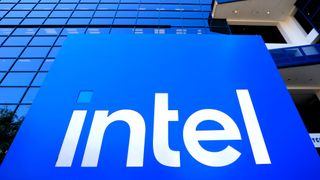Intel
Latest about Intel

AMD, Intel, and TI are ‘merchants of death’ says lawyer representing Ukrainian civilians
By Mark Tyson published
Five lawsuits were filed in Texas this week, putting some of the biggest names in PC tech under an uncomfortable spotlight, as their components are still being found in Russian weaponry.

Best motherboard deals 2025.
By Joe Shields last updated
Here are the best motherboard deals in 2025. We're constantly updating this list with the best deals across all your favorite retailers.

Best gaming GPU deals 2025
By Stewart Bendle last updated
Save money on Radeon, RTX, and Arc graphics cards. We're constantly updating this list with the best GPU deals across all sales at all retailers.

Intel Core Ultra 7 270K Plus and Core Ultra 9 290K Plus spotted at Indian retailer
By Hassam Nasir published
First retail appearance of the Arrow Lake refresh.

Intel tests chipmaking tools from sanctioned China-focused tool maker, report claims
By Anton Shilov published
Intel has evaluated wet etch tools from ACM Research for its 14A fabrication process, raising political and national security concerns.

Intel fails to get EU antitrust ruling overturned in longstanding 16-year AMD competition case
By Mark Tyson published
Intel lost its challenge to overturn an EU antitrust ruling on Wednesday, meaning it now faces a fine of $278 million.

Intel boosts India's chip push with new Tata Group strategic partnership
By Kunal Khullar published
Intel’s new partnership with Tata signals a transformative step for India’s chip ecosystem, enabling domestic manufacturing, advanced packaging, and enterprise compute solutions.

1950s mechanical calculator crumbles in the face of divide-by-zero conundrum
By Mark Tyson published
Divide by zero is one of computing’s most notorious error conditions - and an old mechanical calculator doesn't handle it gracefully.
Get Tom's Hardware's best news and in-depth reviews, straight to your inbox.

